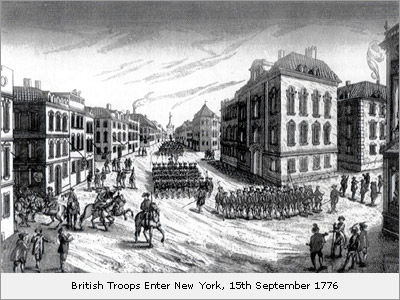| wiki | search |
Main Page | Groups and Assignments | Bios | History | Harlem | Diversity Today | Help
Colonial America | Early America | Modern America
Slavery under British Rule
The British took over the New Amsterdam in 1664 and renamed it New York in honor of James II, the Duke of York. Under the British rule, the lives of slaves became increasingly more regulated. The British authority declared that slavery was a legal institution in 1665 and granted slaveholders the power of life-or-death over slaves in 1682. The British treated slaves as commodities to be sold, bought, and rented. To regularize the slave trade, New York City officials set up a Wall Street slave market in 1711. Run-away slaves and potential rebellions were major concerns of the British colonists. A slave revolt in 1712 prompted the British passing repressive slave codes that limited the slaves' free movement within the city and deterred masters from freeing their slaves. In 1741, New York City officials took action in response to a slave rebellion that may never have been planned. Official suspected a slave rebellion and arrested more than one hundred suspects. The officials hanged four whites and eighteen African Americans for their alleged roles in the plot, burned fourteen people alive, and sold seventy others to plantations in the West Indies.

